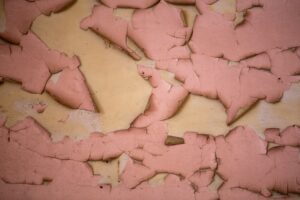Why Is My Wallpaper Peeling Off On Its Own? Water Damaged Walls and Wallpapers
 Peeling wallpapers are a clear sign of water damage in walls. However, there can be more damage hidden beneath the peeling surfaces. Peeling of wallpaper only occurs when the damage to the internal structure of walls has reached an extent that it has started to show on the surface.
Peeling wallpapers are a clear sign of water damage in walls. However, there can be more damage hidden beneath the peeling surfaces. Peeling of wallpaper only occurs when the damage to the internal structure of walls has reached an extent that it has started to show on the surface.
Let’s take a look at what can be hidden beneath the peeling wallpaper and how you can tackle it:
Remove the Wallpaper
There is no method to reuse peeled wallpaper. While you can choose to leave the wallpaper on the walls if you wish, it will not look aesthetically pleasing. It can also cause hindrance in the treatment of the damaged wall. Hence, the best you can do as the first step of your wall treatment is to remove the damaged wall’s wallpaper altogether.
Inspect and Remove Mold
More often than not, water damage in walls leads to mold growth. If your walls are damaged to the extent that the wallpaper is peeling off, there can be a lot of mold growth hidden underneath. Be very careful while looking for mold in the walls, as mold exposure can seriously damage your health.
Look for signs of mold growth on the outside first. You can also remove one of the wall panels and look for mold. Once you detect mold, you will need to remove all wall panels and remove all the mold by scraping it off and collecting it in a heavy-duty trash bag. You don’t want mold to spread to other structures of your home. You can also use a vacuum cleaner to remove mold.
However, this particular step can be a lengthy process of mold growth in your home’s walls that has affected the insulation or electrical wiring. In such cases, you will need to remove the electrical wiring or the insulation altogether and clean all the mold growth. In severe cases of mold growth in walls, you may need to replace the insulation and electric wiring completely.
Clean the Walls
Once you have removed all the mold or don’t find any mold growth in the walls, you can jump to this step. Clean the walls properly to remove any dirt sticking to the wet surface. Even if there is no mold growth inside, dampness may lead to mold growth later on. Damp and dirt can also attract other microbes or insects. Therefore, it’s essential to clean the walls first.
Let Walls Dry
Once you have cleaned the walls of dirt and mold, let them dry. You can assist in this step through different methods. Firstly, you can keep the windows and doors to the room open for ventilation. If there are no windows or rooms that can air out the walls, you can also use artificial methods to achieve this purpose. Get a floor fan and run it directed toward the wall. Depending on the water damage in walls, this step might take a few days to up to a few weeks.
Apply a Sealer
A sealer will cover up the holes through which water seeps into the walls and subject your home’s walls to water damage. Cleaning the walls will pay off here through a smooth application of sealant. You can also scrape any additional dirt, paint, or wallpaper from the walls for an even smoother sealer application. Apply as much adhesive as you deem necessary and Let the walls completely dry after applying the sealant. Use the fan to help speed up the process.
Apply Filler
Once the sealant is dry, apply a filler on top to smooth out the surface of the walls. The filler also takes a full day to dry out. While you may find the process lengthy and time-consuming, it will yield results that will be worth all the effort.
Paint or Apply New Wallpaper
Once the filler is dry, you can proceed to paint the wall or apply a new wallpaper. Additionally, you can sand the wall once more before using paint to it. You can also apply another layer of sealer before applying the glue for wallpaper for an even smoother finish.
Finally, remember that these steps are temporary solutions to treat water-damaged walls and do not guarantee that the walls will not experience water damage again. The only way you can stop water damage in walls is by treating the issue that is allowing the water to seep into the walls. The underlying issue that leads to water damage in walls is likely a sewage system issue on your property. Identifying it and solving it will ensure that your walls stay dry.
If you cannot identify the real issue, don’t hesitate to call a professional restoration company. Alternatively, if you identify the issue but cannot repair it on your own, seeking professional help can save you both time and money in the long run. Many restoration services, such as the 911 Restoration of Central Arkansas, provide complete water damage and mold damage services to personal and commercial properties.




